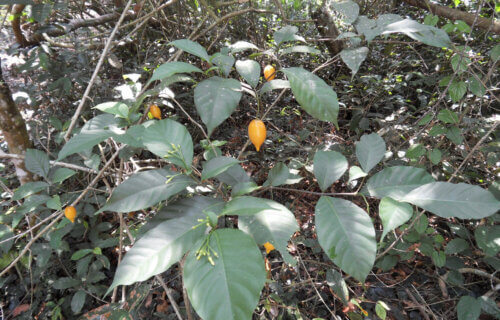SAN FRANCISCO — A traditional African psychedelic plant medicine has inspired the development of two new drugs to treat addiction and depression.
Ibogaine, which has been used for thousands of years in shamanistic rituals as a hallucinogen, hunger suppressant, fatigue alleviator, and even as an aphrodisiac, is the main active ingredient in Tabernanthe iboga, a West African shrub found in the Congo and Angola. However, ibogaine can be fatal.
Scientists have now developed two new drug candidates for potentially treating addiction and depression, modeled on ibogaine’s pharmacology. In very low doses, these new compounds were able to “blunt” symptoms of both conditions in mice. The findings, published in the journal Cell, were inspired by ibogaine’s impact on the serotonin transporter (SERT), which is also the target of antidepressants such as Prozac.
A team in California virtually screened 200 million molecular structures to find ones that blocked SERT in the same way as ibogaine.
“Some people swear by ibogaine for treating addiction, but it isn’t a very good drug. It has bad side effects, and it’s not approved for use in the United States. Our compounds mimic just one of ibogaine’s many pharmacological effects and still replicate its most desirable effects on behavior, at least in mice,” says co-senior author Professor Brian Shoichet from the University of California-San Francisco (UCSF).
Dozens of scientists demonstrated the real-world promise of the novel molecules, which were initially identified using Prof. Shoichet’s computational docking methods. Docking involves systematically testing virtual chemical structures for binding with a protein, enabling researchers to identify new drug leads without synthesizing them in the lab.
Scroll down to see how many Americans may be using psychedelic drugs today

“This kind of project begins with visualizing what kinds of molecules will fit into a protein, docking the library, optimizing, and then relying on a team to show the molecules work. Now we know there’s a lot of untapped therapeutic potential in targeting SERT,” co-first author Dr. Isha Singh explains in a media release.
In the 19th and 20th centuries, doctors in Europe and America experimented with ibogaine’s use in treating various ailments, but the drug never gained widespread acceptance and was ultimately illegalized in many countries. Prof. Shoichet explains that part of the problem is that ibogaine interferes with many aspects of human biology.
“Ibogaine binds to hERG, which can cause heart arrhythmias, and from a scientific standpoint, it’s a ‘dirty’ drug, binding to lots of targets beyond SERT. Before this experiment, we didn’t even know if the benefits of ibogaine came from its binding to SERT,” the researcher adds.
“With this sort of potency, we hope to have a better therapeutic window without side effects. Dropping the dose almost 200-fold could make a big difference for patients,” co-author Professor Allan Basbaum continues.
Prof. Shoichet has submitted the structures of both new molecules to Sigma Aldrich, the chemical manufacturing company, with the aim of making them available for further testing by other scientists, while he continues to search for more precise molecules.
“This is really the way science should be done. We took a group with expertise in disparate fields and came up with something that might really make a difference,” Prof. Basbaum concludes.
Over 5 million Americans may be using hallucinogens
In 2022, researchers from Columbia University suspected that more American adults than ever are experimenting with hallucinogens. Their study found hallucinogen use has increased noticeably since 2015 among Americans over the age of 26.
Conversely, adolescents between 12 and 17 are using fewer hallucinogens. In 2019, estimates show that more than 5.5 million Americans used hallucinogens, accounting for 2.2 percent of the U.S. population over the age of 12. For comparison, roughly 1.7 percent of the population used hallucinogens in 2002.
“While new findings suggesting benefits from use of certain hallucinogens among a range of cognitive areas are being published at a rapid rate, there are still gaps in knowledge concerning safe hallucinogen use, and evidence for potential adverse effects even with professionally supervised use that warrant attention,” says first study author Ofir Livne, MD, MPH, postdoctoral fellow in the Department of Epidemiology at Columbia Mailman School, in a university release.
While the prevalence of 12-month LSD use among Americans increased between 2002 and 2019, risk of “regular LSD use” actually dropped significantly overall among all age groups between 2002 and 2014.
You might also be interested in:
- How do ‘magic’ mushrooms get their psychedelic superpowers?
- ‘Chemistry experiment’ creates non-psychedelic drug that treats depression
- Mind games: Most people still experience psychedelic trip after taking placebo
South West News Service writer Stephen Beech contributed to this report.

